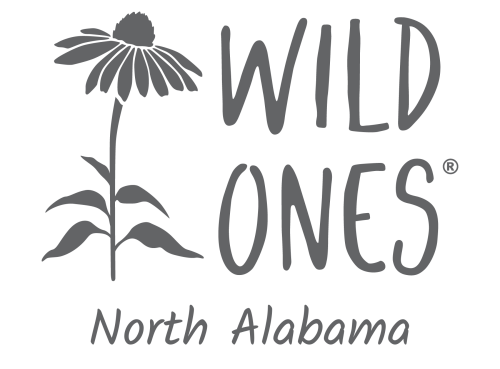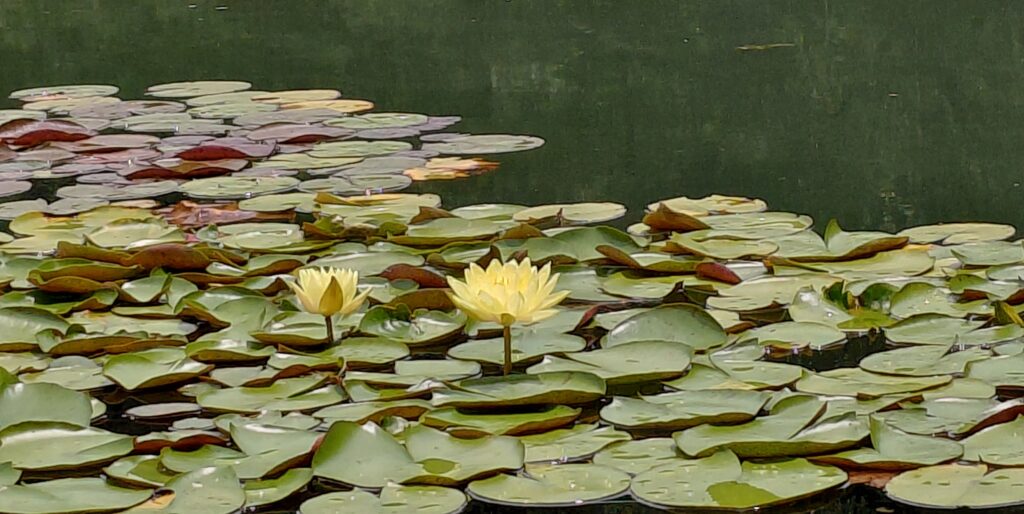
Elgie’s Walk Greenway opened in 2020. Located in South Huntsville, it is 2 miles of paved trail from Grissom High School in the north to Bell Mountain Park in the south. It was named after the grandfather of John Hays and is part of the Hays Farm development. The Hays Family gifted Elgie’s Walk to the city of Huntsville as part of their commitment to green space. I was excited when I learned about Elgie’s Walk. It is conveniently located near my home and most of the path is pleasantly shaded, making it much more bearable during the hot months. Thanks to this opening of the understory, many wet prairie species that were present in the seedbed have been able to flourish with the additional sunlight. I especially appreciate the variety of plant species I can spot from the trail. I’ve been an amateur wildflower identifier for years, and a stroll along Elgie’s Walk has given me my first sightings of many new-to-me species!
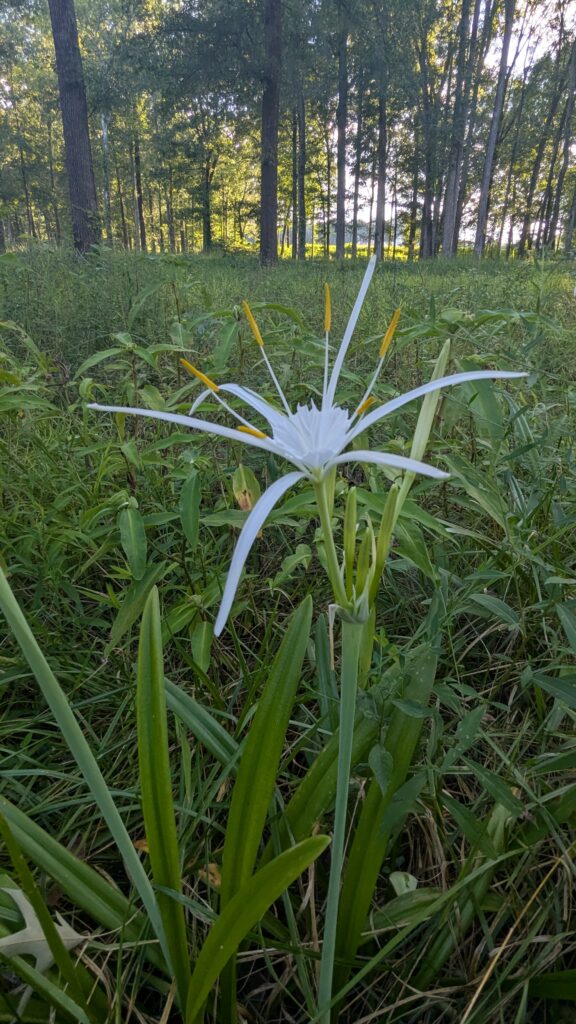
I first learned about the somewhat uncommon woodland spider-lily (Hymenocallis occidentalis) from botanist Lynne Weninegar, but the ones we observed at Matthews Nature Preserve in Toney weren’t ready to bloom yet. Imagine my surprise when I recognized the leaves in a few places at Elgie’s Walk. Not only that, but I was able to catch them when the flowers bloomed. I have spotted several stands of helmet skullcap (Scutellaria integrifolia), which is an adorable little blue-purple flower that is used by a variety of native bees and butterflies. When I found an American snowbell sapling (Styrax americanus), I thought the fragrant white blooms were so cute I had to add the plant to my own yard. Swamp rosemallow (Hibiscus moscheutos) is an impressive summer bloom that is scattered all along Elgie’s Walk, and I can even spot the large flowers from my car. In north Alabama, swamp rosemallow is a host plant for 34 species of butterflies and moths (National Wildlife Federation). It’s a great species for this space because it not only tolerates periodic flooding, but thrives in it.
And there’s more than plants: Due to the ponds and vernal pools, a variety of animals use the area as well. In early years, I often spotted a fox squirrel. I have not managed to see an alligator there yet, but I’m keeping my eyes open. Just recently I found a clutch of turtle eggs that had probably been dug up by a raccoon, and once when driving past on Haysland Road I saw a muskrat at one of the ponds. I’ve even seen an otter in the area. Did you know we have river otters in Alabama? I didn’t, until I found one killed by traffic on Haysland Road. (But in happier news, I saw a live otter a few weeks after that.)
However, most exciting is finding a few species that are endangered. At the end of May, I spotted some really cool looking flowers. They were Michigan lilies (Lilium michiganense). This is a species found in prairies, especially in the Midwest and Great Lakes areas. While it is more common in those areas, in Alabama it is considered an S1 species–this means that it is “critically imperiled” in this state. In fact, Helen Czech, a field biologist with Alabama A&M University, said the stands of Michigan lily we found at Elgie’s Walk were the most impressive she’s ever seen! Helen also found lakecress (Rorippa aquatica), which is also S1 in the state of Alabama. In 2022, I once found a couple dwarf trillium (Trillium pusillum), which is a species of trillium I haven’t spotted anywhere else yet. It is considered S2 (“imperiled”) in Alabama. Trillium species take several years before they are able to bloom, so it’s always a magical flower to find, even the more common varieties. Finally, landscape designer Denise Woodring found a barbed rattlesnake root (Nabalus barbatus). This species is S1S2 in Alabama, meaning it is between “imperiled” and “critically imperiled,” but it is also considered G3, meaning it is “vulnerable–at moderate risk of extinction or elimination” (NatureServe) on a global scale!
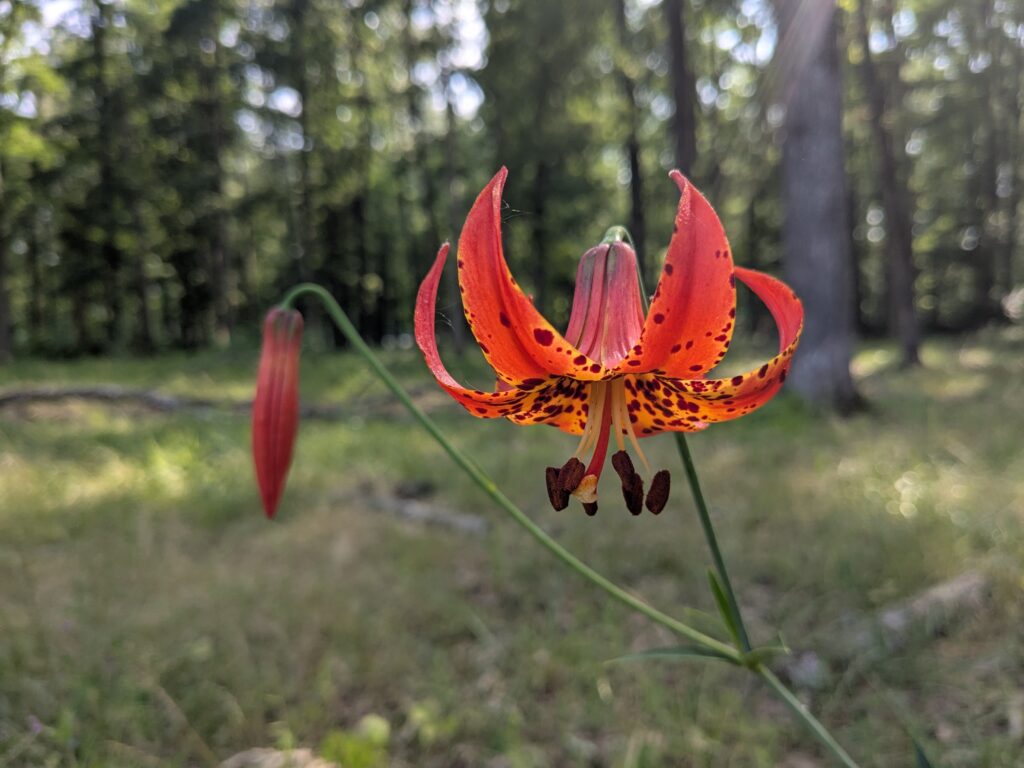
As shown in the story of the otter that was hit by a car, there are things we do that harm biodiversity. Before the road was built there, that otter would never have faced the danger of being roadkill. Habitat fragmentation, which occurs as land is turned into disconnected and isolated patches, supports fewer species and creates more edge habitat. Residential areas are usually landscaped with large monocultures of turf grass, leading to deserts for native pollinators and the species that depend on them. Traditional landscape maintenance leads to overreliance on herbicides, pesticides, and mowing, yet these things often kill native species while allowing invasive species to spread uncontrolled. Some of the plants I mentioned seeing at Elgie’s Walk have already been killed through lack of awareness, and some spots consist of nothing more than invasive grass species now.
But there are also ways we can support biodiversity. While the initial mowing has been beneficial, chronic over-mowing will destroy this area of amazing biodiversity, so it is crucial that we strike a balance on preserving and maintaining this space. One thing to do is to designate areas for different mowing frequency. The perimeters of paths and structures should be regularly mowed for safety and visibility, but areas farther from the paths and up under trees will do better with only seasonal or rotational mowing. This cuts down on soil compaction caused by large machinery, allows for flowers to bloom and go to seed, and is better for the long-term health of the plants. A natural resource management plan would specify what methods should be used in what area and when certain actions should be taken (or not). Creating a project through iNaturalist would allow anyone in the area to contribute as “citizen scientists” while also learning and getting feedback from the many professionals that use the app. This data can be used to track the health and spread of both native and invasive species. Finally, informational signs can be installed at certain areas to teach visitors facts about what they are seeing–things like the reason some areas seem to be “overgrown”, the ecological benefit of vernal ponds, or the endangered status of the Michigan lily.
I’m sure you can see why Elgie’s Walk is such an exciting area. As Huntsville continues to grow and more places are developed, valuable spaces like this need to be recognized, protected, and preserved, not only for humans to enjoy, but also for the native species that make it so special. To maintain the beauty and variety of Elgie’s Walk Greenway and surrounding areas, we need to change the way we think about our relationship with nature. We can find a way that supports the growth of Huntsville while also allowing people to enjoy the wealth of Alabama’s native species. Through a natural resource management plan that outlines how to manage this space, as well as other initiatives, we can support our native biodiversity at Elgie’s Walk.
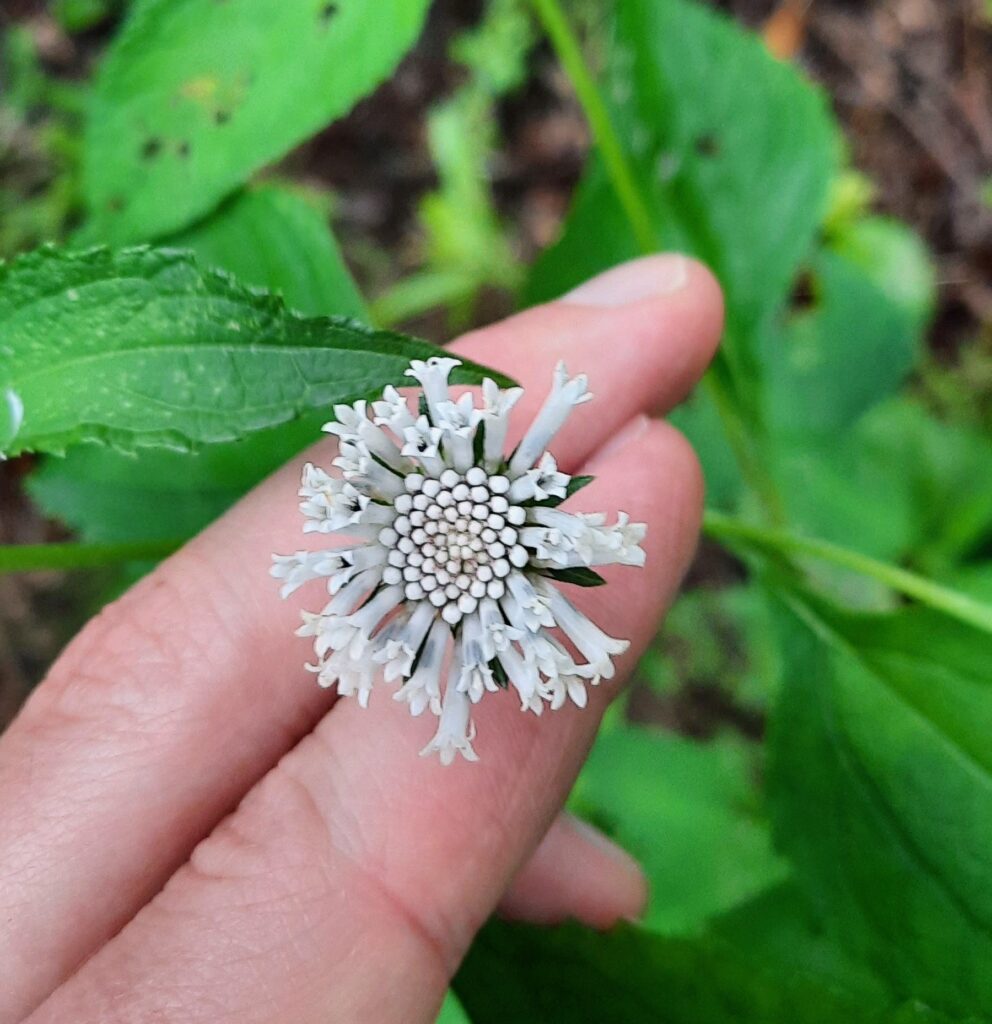
Article authored by WONA Secretary Lauren Linder.
